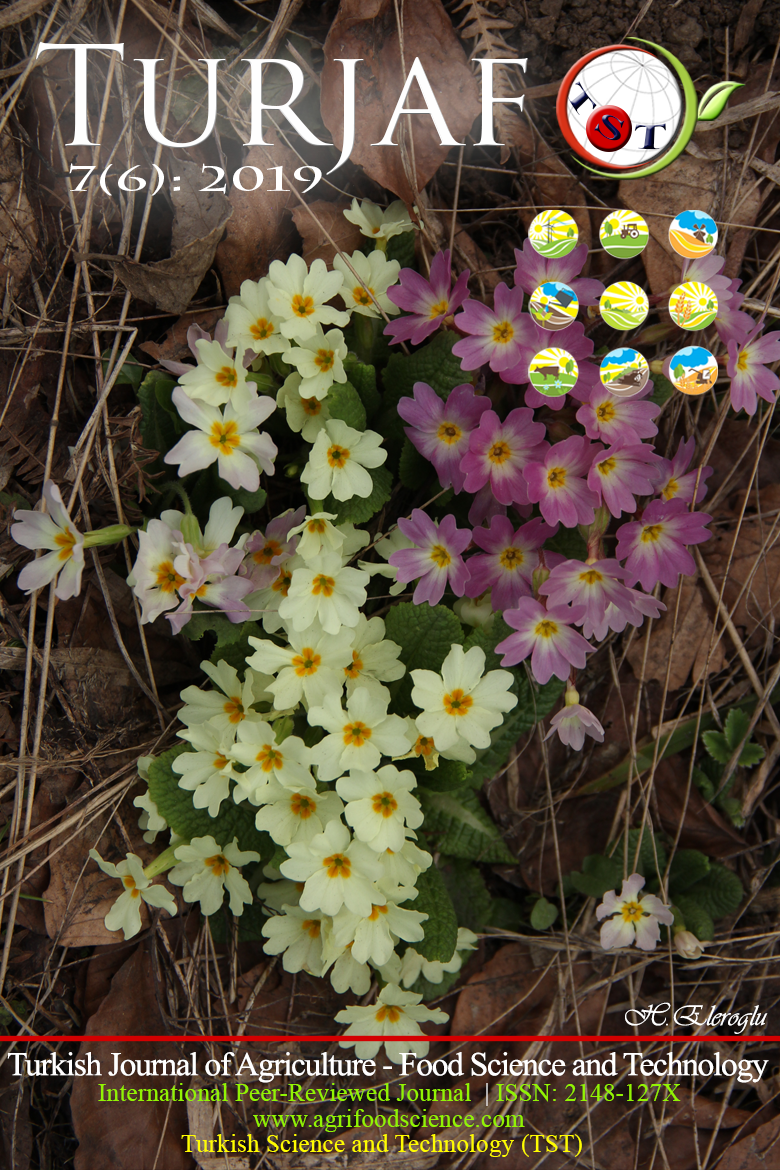The Effect of Drying Methods on Color and Chlorophyll Content of Parsley Leaves
DOI:
https://doi.org/10.24925/turjaf.v7i6.919-926.2548Keywords:
Chlorophyll, color, drying, energy consumption, parsleyAbstract
Parsley leaves (Petroselinum crispum L.) weighing 100 ± 0.09 g were dehydrated from moisture content of 82.24 ± 0.07% to 10.01 ± 0.02 % (wet basis) using the microwave (MD), convective (CD), solar oven (SOD), sun (SD) and natural (ND) drying. Drying in MD, CD, SOD, SD, and ND was completed at 18±1.15, 61±0.58, 255±10, 330±5.29, and 1530±11.55 min, respectively. The energy consumption of MD and CD was measured as 0.213±0.009 and 0.427±0.015 kWh, respectively. In microwave drying, 700 W microwave output power was applied while convective drying was used with 50°C temperature and 1m/s air velocity. The sun and solar oven drying processes were carried out under the same conditions at the same time. The average temperature of the system during the solar oven drying was 81.7±1.5°C whereas the airflow in the system was 0.5 m/s. The data obtained from the experiments were also modeled using twelve different thin-layer drying equations, and thus the theoretical data were obtained. According to these theoretical data, the best model in the microwave and natural drying was Alibas‘s equation while the most suitable model in the solar and convective drying was modified Henderson and Pabis‘s model. On the other hand, it was seen that the best model in the solar oven drying was the Page equation. As a result, considering both quality and drying parameters, it was determined that MD and SOD were the most suitable method for drying of parsley leaves.Downloads
Published
26.06.2019
How to Cite
Alibas, I., Zia, M. P., & Yilmaz, A. (2019). The Effect of Drying Methods on Color and Chlorophyll Content of Parsley Leaves. Turkish Journal of Agriculture - Food Science and Technology, 7(6), 919–926. https://doi.org/10.24925/turjaf.v7i6.919-926.2548
Issue
Section
Research Paper
License
This work is licensed under a Creative Commons Attribution-NonCommercial 4.0 International License.









